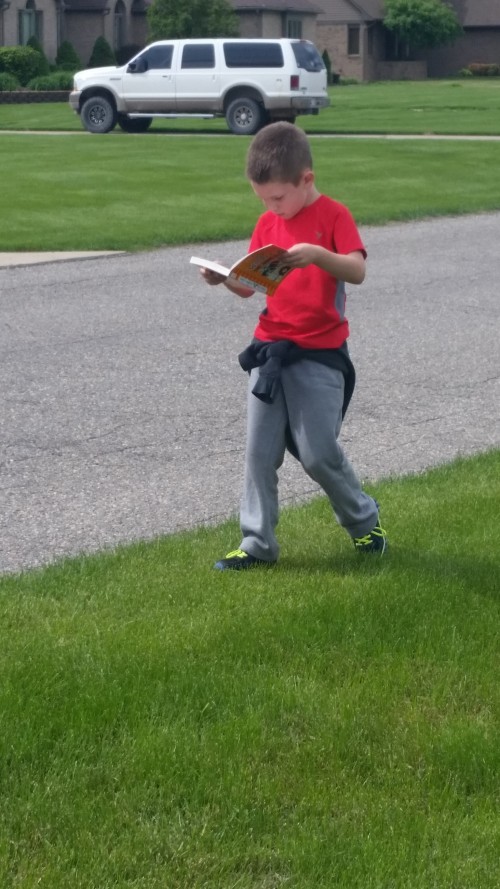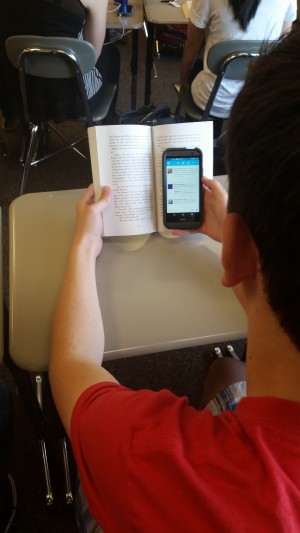 When teens go crazy for a book or a book series, it’s a school librarian’s dream come true. But with the success of one series, next comes the pressure of finding something similar to keep the reading momentum going. For the last few years, I’ve been chasing The Hunger Games and Divergent, digging through dystopian lit in search of the next epic YA page-turner. Well, dystopian fans and those who love them: look no further than The Testing series, by Joelle Charbonneau.
When teens go crazy for a book or a book series, it’s a school librarian’s dream come true. But with the success of one series, next comes the pressure of finding something similar to keep the reading momentum going. For the last few years, I’ve been chasing The Hunger Games and Divergent, digging through dystopian lit in search of the next epic YA page-turner. Well, dystopian fans and those who love them: look no further than The Testing series, by Joelle Charbonneau.
The Plot (Book One, No Spoilers)
Malencia (Cia) Vale is thrilled to learn that she has been chosen for The Testing, the rigorous process that candidates endure to qualify for the one remaining University. She has longed to follow in her father’s footsteps, and to leave her small, quiet Five Lakes Colony to see Tosu City, as well as the wider world that an education from The University can bring. But as she leaves, her father warns her to be extremely cautious. The Testing and the people who run it are not always as they seem. When the extreme and potentially dangerous Testing process begins, Cia sees that the stakes are much higher than she thought–and that her father might have been trying to protect her from hidden evil.
The Answer to Your “Hunger Games problem”
 The Testing series has many similarities to both The Hunger Games and Divergent. Yet it is different enough to hold even a reluctant reader’s interest.
The Testing series has many similarities to both The Hunger Games and Divergent. Yet it is different enough to hold even a reluctant reader’s interest.
Readers will find a similarly powerful female protagonist, one with a specialized set of skills that makes her particularly exceptional in her new environment. Governmental corruption and conspiracy drive the action to continually new heights. Readers experience plot twists that drive the story at moments that otherwise would be routine. Hints of romance bloom between Cia and her old Five Lakes friend, Tomas, but never distract from the primary story. The books have similarly high levels of violence as The Hunger Games. The book covers even bear some resemblance to their dystopian predecessors.
With this series, teachers and parents will once again find their students reading for fun and asking for books as gifts. And with the film rights optioned by Paramount, the odds of seeing this trilogy become a movie series are high. I’ve field-tested the series with the students at my high school, and it has been a huge success. All of my copies are currently flying through the 9th grade at rapid speed.
Book Details
Interest Level: Grades 7-12 (violence is prevalent, making it questionable for younger readers)
Reading Level: Accelerated Reader 5.6; Lexile 830L
ISBN: 9780547959108
Format: hardcover
Publisher: Houghton Mifflin Books for Children
Publication Date: June 4, 2013
Awards: YALSA Quick Pick Top Ten 2014, Anthony Award 2014
 Bethany Bratney (@nhslibrarylady) is a National Board Certified School Librarian at Novi High School. She reviews YA materials for School Library Connection magazine and for the LIBRES review group. She is an active member of the Oakland Schools Library Media Leadership Consortium as well as the Michigan Association of Media in Education. She received her BA in English from Michigan State University and her Masters of Library & Information Science from Wayne State University.
Bethany Bratney (@nhslibrarylady) is a National Board Certified School Librarian at Novi High School. She reviews YA materials for School Library Connection magazine and for the LIBRES review group. She is an active member of the Oakland Schools Library Media Leadership Consortium as well as the Michigan Association of Media in Education. She received her BA in English from Michigan State University and her Masters of Library & Information Science from Wayne State University.

 Years ago, in a jaded moment of teaching frustration, I purchased a book entitled
Years ago, in a jaded moment of teaching frustration, I purchased a book entitled  In that sense, the focus of English classrooms has been off for a long time. We build our units around a core canonical text, and make everything else more or less in service of that text. Is our concern whether kids learn to love reading, or do we press them to love this book at this moment, because it’s what we believe people who love reading should value?
In that sense, the focus of English classrooms has been off for a long time. We build our units around a core canonical text, and make everything else more or less in service of that text. Is our concern whether kids learn to love reading, or do we press them to love this book at this moment, because it’s what we believe people who love reading should value?



 Hattie Maguire is an English teacher and Content Area Leader at Novi High School. She is spending her fourteenth year in the classroom teaching AP English Language and Composition, English 10, Debate, and Practical Public Speaking. She is a National Board Certified Teacher who earned her BS in English and MA in Curriculum and Teaching from Michigan State University.
Hattie Maguire is an English teacher and Content Area Leader at Novi High School. She is spending her fourteenth year in the classroom teaching AP English Language and Composition, English 10, Debate, and Practical Public Speaking. She is a National Board Certified Teacher who earned her BS in English and MA in Curriculum and Teaching from Michigan State University.
 Next week, we’ll spend a day in class where they’ll look at their past essays and really read my comments (a girl can dream, right?). Then they’ll talk about those essays with each other and set some goals for this next piece. I’m hoping the goals will be more like “I will make sure my analysis in my body paragraphs directly relates to my thesis” and less like “I will get an A.” We’ll see. One way I hope to get at this is some reflective journaling throughout the process. We’ll set the goals at the beginning of the process, but then I’m going to ask the students to revisit those goals throughout the writing process. What have they done to achieve those goals? What struggles are they having? Hopefully, by asking them to articulate their progress, they’ll begin to realize that they are the ones in control of improving their writing.
Next week, we’ll spend a day in class where they’ll look at their past essays and really read my comments (a girl can dream, right?). Then they’ll talk about those essays with each other and set some goals for this next piece. I’m hoping the goals will be more like “I will make sure my analysis in my body paragraphs directly relates to my thesis” and less like “I will get an A.” We’ll see. One way I hope to get at this is some reflective journaling throughout the process. We’ll set the goals at the beginning of the process, but then I’m going to ask the students to revisit those goals throughout the writing process. What have they done to achieve those goals? What struggles are they having? Hopefully, by asking them to articulate their progress, they’ll begin to realize that they are the ones in control of improving their writing. Student-led modeling: I often write my own essay along with my students a la Penny Kittle’s
Student-led modeling: I often write my own essay along with my students a la Penny Kittle’s